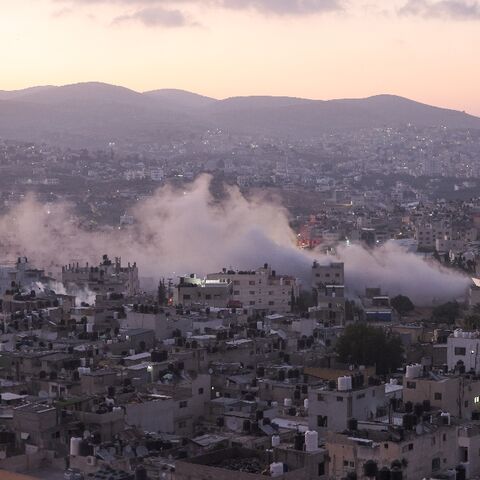A heat wave continued to hit the Middle East on Wednesday, leading to electricity issues in Egypt and Jordan, closures in Iran and continued challenges in drought-hit Iraq.
The following is a breakdown of the scorching conditions in countries throughout the region.
Egypt
The temperature in Cairo reached a high of 100 degrees Fahrenheit (38 degrees Celsius) on Wednesday, according to AccuWeather.
Power consumption in Egypt reached a record of 34,650 megawatts at peak hours during the current heat wave that began last month. As a result, the Egyptian government announced daily power cuts lasting a few hours to alleviate the load. The government said on Wednesday it has begun decreasing the amount of time the power is out, but the scheduled cuts could last into September, according to the state-owned news outlet Al-Ahram.
Jordan
The high in Amman was 91 degrees Fahrenheit (33 degrees Celsius), according to AccuWeather. The official Petra news agency reported that “demand for electricity has soared” in response to the temperature in recent days.
Unlike neighboring Iraq and Syria, Jordan typically has 24/7 electricity. Short power outages sometimes occur during hot days in the summer.
Iraq
Baghdad recorded a high of 120 degrees Fahrenheit (49 degrees Celsius), with AccuWeather warning of “very dangerous heat.”
The website Hot Cities ranked southern Iraq’s Basra as the hottest city in the world on Wednesday, with a temperature of 122 degrees Fahrenheit (50 degrees Celsius).
Iraq’s high summer temperatures are compounded by chronic electricity shortages in the country, despite its abundance in oil wealth. Public electricity is typically only available for part of the day, leading people to rely on fuel-powered generators to keep cooling systems on during the heat.
Kuwait
Kuwait City’s temperate reached a high of 122 degrees Fahrenheit (50 degrees Celsius) on Wednesday, per AccuWeather.
Agence France-Presse reported on Wednesday that Kuwaitis tend to stay inside in such temperatures, but that shopping malls remain busy due to heavy air conditioning.
Oil-rich states in the Gulf like Kuwait, Saudi Arabia and the United Arab Emirates do not have electricity shortages a la Iraq, Lebanon and other countries in the region.
Iran
Tehran’s high was 102 degrees Fahrenheit (39 degrees Celsius), according to AccuWeather.
The current heat wave in Iran prompted authorities to announce national emergency holidays on Tuesday and Wednesday. Iran also suffers from electricity shortages, despite its significant oil and gas reserves. Some Iranians alleged that the government is mismanaging Iran’s electricity amid the scorching temperatures, Al-Monitor’s correspondent in Tehran reported on Tuesday.
Why it matters: The Middle East has long been among the hottest regions in the world, making it more susceptible to the effects of climate changes. There were wildfires in Turkey last month in addition to fires in Algeria and parts of Europe.
Iraq in particular is being threatened by rising temperatures. In July, the United Nations warned of a drastic drop in water levels in Iraq’s southern marshlands.
Lebanon also notably has electricity shortages, as well as fuel shortages that make powering generators difficult. Lebanon is currently not as hot as other countries in the region, but humidity can make the weather unbearable. The high in Beirut was 89 degrees Fahrenheit (32 degrees Celsius) on Wednesday, but AccuWeather said the temperature felt like 104 degrees.








